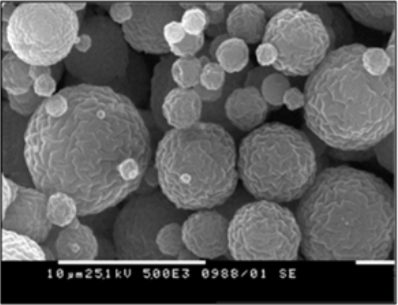- Home
- Blog
- News
- Basics
- Sources
- Agencies, Regulatory & Organisations
- CERSI Excipients Browser
- Excipient Report
- Excipient DMF List
- EXCiPACT Certified Companies
- Excipient Documentation
- Excipient EINECS Numbers
- Excipient E-Numbers
- FDA Inactive Ingredient List
- FDA GRAS Substances (SCOGS) Database
- IPEC Americas
- USP - U.S. Pharmacopeia
- Definitions
- Whitepapers / Publications
- Supplier
- Services
- Media
- Events
- 1st pharmaexcipients Poster Award
- Event Calendar
- Events featured by pharma-excipients
- 4th Annual Formulation & Drug Delivery Congress
- DDF Summit
- ExcipientFest Americas
- ExcipientFest Asia
- Global CompliancePanel
- International Conference and Exhibition on Pharmaceutics & Novel Drug Delivery Systems
- Formulation & Drug Delivery USA Congress
- Laboratory Medicine 2018
- Making Pharmaceuticals Europe
- Making Pharmaceuticals Exhibition
- Pharma Integrates
- PharmaExcipients China @CPhI China
- TTC Technology Training Center
- Jobs
- Online Sourcing
- Contact
20. June 2018
The microsphere was a primary particulate system for taste-masking with unique structural features defined by production process. In this article, ibuprofen lipid microspheres of octadecanol and glycerin monostearate were prepared to mask the undesirable taste of ibuprofen via three kinds of spray congealing processes, namely, air-cooling, water-cooling and citric acid solution-cooling. The stereoscopic and internal structures of ibuprofen microspheres were quantitatively analyzed by...
12. October 2017
Nowadays micro- and nanotechnologies have emerged as one of the most promising strategies in the pharmaceutical practice to achieve site-speci c and controlled drug delivery.1 Biodegradable mic- roparticles have been extensively utilised for oral and parenteral administration, and recently they have also been considered as an approach to deliver drugs nasally
07. April 2017
ABSTRACT Sumatriptan succinate (SS) is a drug used in the treatment of migraine headaches, but suffers from low patient compliance due to its unpalatable bitter taste. The purpose of the present work was to prepare taste-masked oro dispersible tablets (ODTs) of SS by incorporating drug loaded microspheres into tablets for use in patients experiencing difficulty in swallowing. Microspheres loaded with SS were prepared by solvent evaporation technique. Eudragit EPO, a pH-sensitive...
13. September 2016
Abstract Many vaccines, such as the inactivated polio vaccine (IPV), must be administered in several doses for full efficacy. Because patient access is a major challenge for vaccination efforts in developing countries, administering multiple doses per patient is impractical in those areas. Single-administration vaccines would greatly improve efforts to vaccinate populations in Third World countries, and the World Health Organization (WHO) Expanded Program for Immunization describes an ideal...
09. August 2016
The importance of providing safe and effective delayed- and extended-release oral formulations that can replace products requiring multiple administrations has been continually cited as an area in need of improvement for pharmaceutical companies. Such controlled release challenges become especially critical when they must be adapted for paediatrics, those suffering from dysphagia, or patients with specific dosage administration limitations. More often than not, lack of palatability and...
28. July 2016
ABSTRACT Background: Gastroretentive floating microsphere containing Lafutidine, a second generation histamine H2–receptor antagonist were prepared by ionotropic gelation technique by using sodium alginate, HPMC K4M, ethyl cellulose as polymers, sodium bicarbonate as gas generating agent and calcium chloride as cross linking agent. Objective: To formulate a system to remain in the stomach for prolonged and predictable period in order to enhance the drug bioavailability. Method: They were...
19. July 2016
Abstract The objective of this study was to develop a novel prasugrel base microsphere-loaded tablet (PBMST) with enhanced stability as a bioequivalent to the commercial prasugrel hydrochloride-loaded tablet. Numerous prasugrel base-loaded microspheres were prepared with hydroxy-propylmethyl cellulose (HPMC), colloidal silica and various acidifying agents using a spray-drying process, and the physicochemical properties, solubility and stability were investigated. The PBMSTs were prepared and...
31. May 2016
The aim of the current study was to formulate Fexofenadine hydrochloride loaded sustained release microspheres using HPMC K100 M CR, a release retardant hydrophilic polymer by solvent evaporation method. The effect of different drug loading on drug content, drug encapsulation efficiency and release of drug was monitored. The studies on in vitro release mechanism were performed using USP paddle method with 900 ml of phosphate buffer (pH 6.8) for 10 h at 100 rpm. The mechanism of the drug release...
29. February 2016
The purpose of this investigation was to prepare and characterize acyclovir loaded floating microspheres by emulsification solvent evaporation method. Piperine was added to investigate its effect on acyclovir bioavailability. The microspheres were characterized for size, shape, entrapment efficiency, in vitro drug release, and in vivo pharmacokinetic parameters. The morphological characterization of microspheres was done using a scanning electron microscope. The microspheres were spherical and...
13. November 2015



